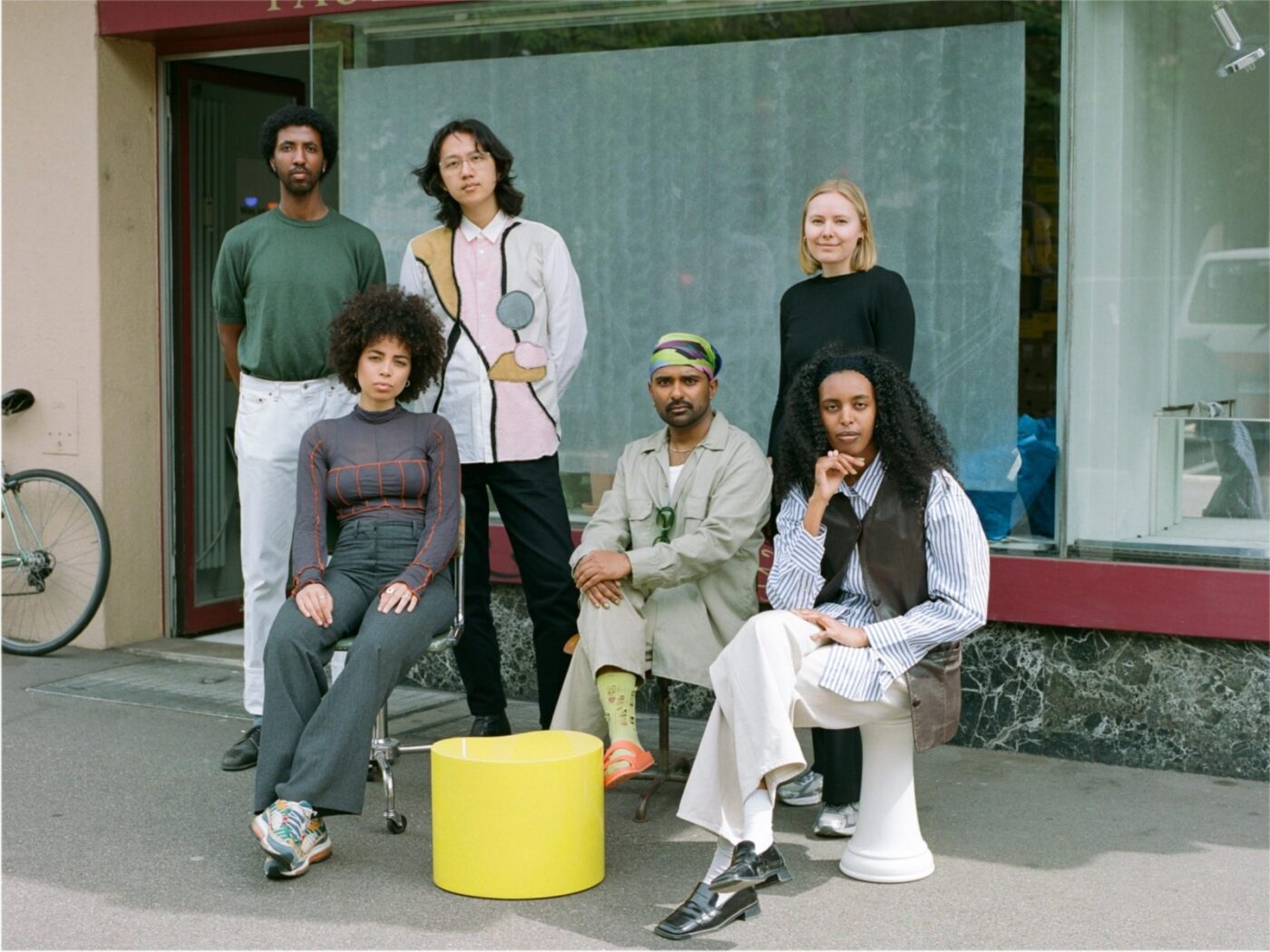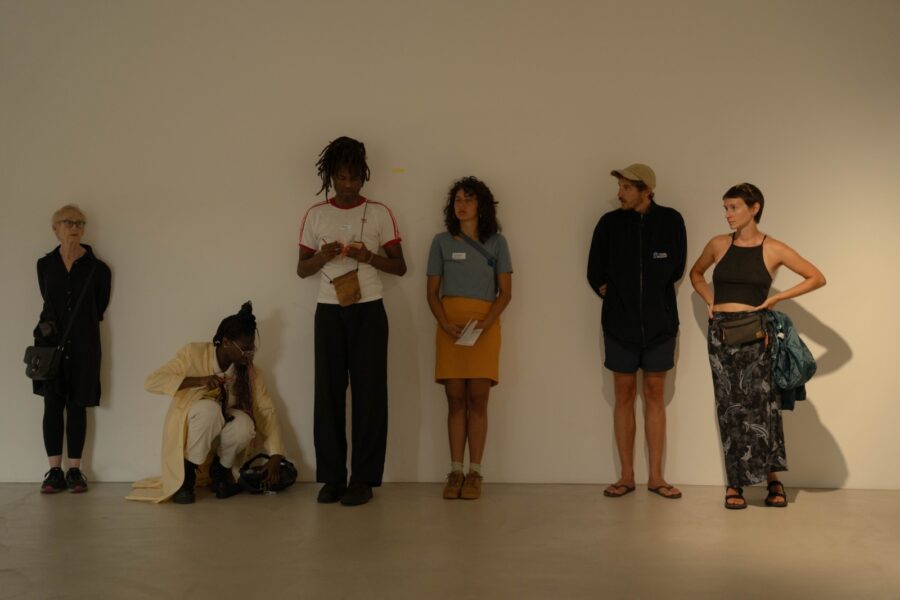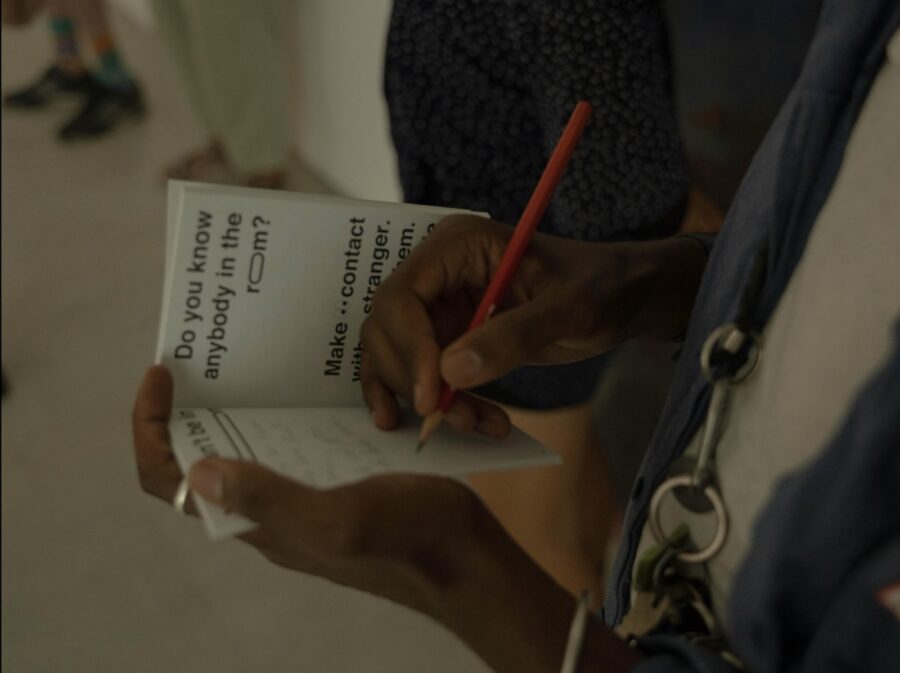"Unquestioned adaptation leads to unwritten rules."

The collective Hybrid Project Space investigates in its public research processes who is welcome in art institutions and who is not. The question of diversity and inclusion in art spaces was also central to three tours during the Kunsttage Basel 2023. Together with a host, interested parties were able to visit the Stampa Gallery, the Kunstmuseum Basel, and Ausstellungsraum Klingental. We wanted to know from Nahom Mehret and Laura Schläpfer what insights were gathered on the tours and what motivation lies behind their work.
Last year, with a host and a group of visitors, you visited various art institutions and then discussed together who cannot be present in these spaces. What were your findings and were there differences depending on the type of institution?
LS: "It quickly became clear that in different types of institutions, there are both different expectations from visitors and different rules of behavior from the institution itself. These rules are like invisible contracts between the institution and the visitors, which unfold during a visit to an exhibition. For example, it was evident that in a large institution like the Kunstmuseum, a quieter, more reserved behavior was exhibited compared to in an artist run-space or gallery, where there was more conversation from the beginning and where the exhibiting artist happened to be present and actively engaged in dialogue with us. We became very aware that our question of how art and cultural spaces can become more diverse and inclusive cannot be applied equally to all institutions. Each place must be questioned anew, taking into account a wide range of factors, perspectives, and expectations. The result will never work on a one-answer-fits-all principle."

Does it have an impact on the perception of an institution when visitors are directly greeted by a person – when the institution essentially has a "human face"?
NM: "Yes, but I would say it also depends on the function these individuals serve and the situation they create. For example, in the museum, there are people at the forefront with a supervisory function. Their presence often has the effect of making visitors behave as if they were being watched. However, during our visit to the gallery, there was no supervisor, which directly affected the behavioral dynamics of our group of visitors. The unwritten rule to behave quietly, as was clearly evident during the museum visit, was not adhered to in the gallery, and conversation and discussion began from the outset. There were also different opinions within our group of visitors about what behavior is 'correct.' We discussed all these perspectives as a group after visiting the institutions. In general, we find that once the unwritten rules are broken or questioned, friction or discomfort arises. And then, the essential thing is how to deal with this friction."
LS: "What matters is the interaction one has with the person one meets at the start of a visit to an institution. If it's a guard, or if one is immediately reprimanded at the beginning, it often no longer feels like a moment of welcome. But if someone actively approaches you, as the artist did during our gallery visit, who also actively encouraged us to ask her questions, then it can make the exhibited art more accessible because then you really dare to ask questions. When one is welcomed and greeted in the spaces, it opens up the space, and for me, it also lowers the threshold for entry into an institution."
NM: "If one feels observed as a visitor, it functions like a constant reminder that seems to say, 'Be aware of how you behave here.' The people one meets on-site in an institution set a certain behavior, which visitors often simply adapt. This automatic adaptation is particularly pronounced in visitors who are not so often in museums. Through this unquestioned adaptation, unwritten rules or psychological contracts are created. In the discussion with the group, there was room to reflect on this, and it was discussed where these rules come from and what happens if one does not follow them. Together, we questioned who does not feel welcome in art institutions. For example, one person said they could not imagine going to a museum with their child because they know they would constantly be under observation, as the child could break something. Accordingly, they only feel welcome without their child. Another point of discussion was whose expectations of institutions are heard and whose are not, and whether there are expectations that are more legitimate than others."

Are there best practice examples, places where you would say that inclusion is already being practiced? Or is the idea of an inclusive cultural space still a vision?
LS: "We're often asked this question, and I would say there are positive developments. For example, exhibition spaces that are starting to address diversity and inclusion more prominently or that include various diverse perspectives in the planning of their activities from the outset. This is an important characteristic and a first step that involves not deciding about other perspectives but providing a platform for them and the affected individuals. But fundamentally, we're already committed because there are still too few such efforts."
Who do you reach with your collaborative research work? Are there also people whose voices you consider important but who do not participate in your offerings?
NM: "During the tours at the Kunsttage, it was very evident that depending on who the host of the tour was or where the tour went, the composition of the visitor group also varied specifically. The tour to the artist run-space with the young student Subeer Ismail as the host attracted different people than the tour through the art museum with Va-Bene Elikem Fiatsi, where many more people with academic backgrounds participated. This composition also influenced the respective discussions after the visits to the institutions and which perspectives and life realities were included in them and which were not."
LS: "Our experience so far is that mainly people participate in our offerings or approach us for collaboration who were already interested in the topic of inclusion beforehand. We are still figuring out how we can also involve people who, for example, never go to a museum because they think they don't have the knowledge to engage with the things shown there. But the questions of diversity and inclusion concern so many subgroups that you can never reach everyone; that would also be a very ambitious goal."
NM: "We have found that hosting is a very important factor in being able to engage people in grappling with our questions. Through welcoming gestures and personal guidance, it becomes easier for them to participate in processes and contribute their opinions."
LS: "Exactly, the human factor is important. That's why our main approaches include both hosting, creating a culture of welcome, and jointly questioning the status quo in exchange. We don't act as experts who provide the answers; instead, we see the discussion as a collaborative process during which feelings can be expressed and discomfort can be articulated."

With "This is Not a Guidebook," you've developed a small publication with questions and instructions for surveying art spaces. This booklet can be used without your hosting. What feedback have you received from users?
LS: "In our hosted formats, immediacy is certainly a central moment. But we do receive feedback, sometimes very detailed, on the This is Not a Guidebook booklet from people who have taken the time to engage with it. This feedback gives us motivation and the knowledge that the questions we ask are relevant, engaging people, and sparking a desire for exchange."
Are there insights from your research process that completely surprised you?
NM: "I am surprised by the variety of expectations and needs regarding cultural institutions. Therefore, it's difficult to simplify the topic and define exactly how to make an institution more accessible. But the most important thing is that despite this complexity, there is a willingness to negotiate and discuss, to tackle the whole issue and also to endure discomfort."
To whom do you want to make your collected insights available?
LS: "We have developed our insights together with many others, and the results should definitely be freely available, accessible, and as widely distributed as possible, whether on a website or in a publication. Finding the right presentation formats is also a process, and it motivates us to know that we still have work ahead of us."
What is your personal motivation for volunteering to engage in the topic of inclusion and diversity in culture, and for whom are you advocating?
NM: "A strong motivation for me was the realization that I am not alone with these questions and that many people are thinking about inclusion and asking themselves the same questions as I am. Working with the Hybrid Project Space collective provides the opportunity to really address the issue and create a space for it. From our research, we continually draw fascinating insights that we then pursue together and that bring about a development in the discussion. This form of engagement is more sustainable for me than talking for hours about inclusion after an exhibition opening, only to let it drop afterward."
Thank you for the interview.
19. Februar 2024
///
///
HYBRID PROJECT SPACE is a collective of individuals from the fields of museum studies, curation, media production, art, architecture, and graphic design. Together with the public, the collective engages in a discussion about how art and cultural spaces can become more inclusive and diverse. At the core of the research process are questions surrounding diversity and accessibility, which are approached with a multitude of voices and interdisciplinary perspectives.
